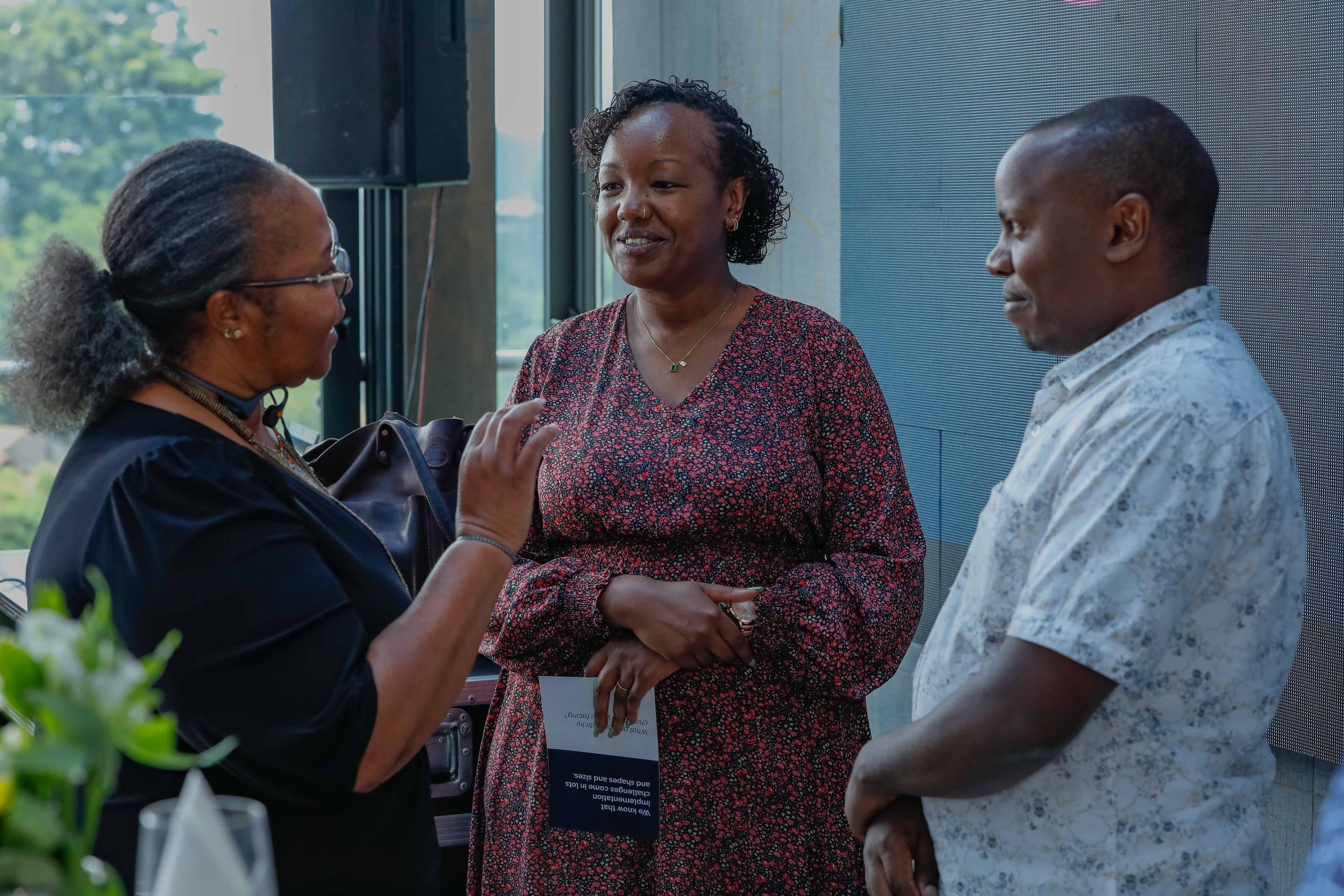The Secret Sauce: Relationships in Implementation Research
High quality implementation research (IR) isn’t just about methods and metrics. It’s built on trust, collaboration, and open dialogue. At its core, IR is a human-centered process, where the success of a project is just as dependent on the relationships within and across teams as it is on the technical aspects of the work.
Relationships are the work.
Effective implementation research is often compared to chefs in a bustling, experimental kitchen. The best results come not from following a recipe exactly, but from how teams collaborate, adapt to challenges, and communicate as they go. In the same way, IR thrives when teams share insights, chase greater understanding, and adjust their approach based on new learning.
With this in mind, we are organising our insights from the uBoraBora portfolio around four key components we consider essential:
Bit to Tweak – The specific aspect of a programme that could be improved.
Objective – The goal and hypothesis behind that improvement as the programme scales.
Relationships – How the team works together
Approach – The methodologies used to test, learn and improve.
The importance of relationships in IR cannot be overstated. When teams trust and communicate openly, they create an environment where curiosity is welcomed, insights are shared, experimentation thrives, and progress is made more effectively. But like any team effort, building and nurturing these relationships requires intentional effort.
This blog explores some ways you might nurture the kind of relationships needed for implementation research to thrive.
Loyal Disagreement: Embracing Diverse Perspectives
Diverse perspectives are essential for improving outcomes, but they don’t always come easily. By creating space for asking questions and constructive critique, teams can identify flaws early and spark better ideas.
At the start of their implementation research, Anne-Fleur Lurvink ink and Afua Dogbatsey from Rising Academies hosted an online workshop with team members from across the organisation to identify any flaws in the proposed methodology. The group quickly pinpointed potential pitfalls and brainstormed solutions. The outcome: a practical work plan with strong buy-in and high levels of enthusiasm.
Embracing Risk: Testing Multiple Approaches
Embracing risk is equally important. In uncertain contexts, sticking to one untested strategy can be riskier than trying multiple approaches. Impact Network demonstrated this when they expanded into new schools in Zambia. Promise Makala , Francesca (Chesci) Horn and the team decided to test different solutions to address key unknowns. By experimenting with both a checklist of core habits and deliberate coaching practice lesson feedback techniques, the team engages two opportunities to improve teaching and learning and is able to quickly adapt and focus on what works best and ditch what doesn’t.
Follow Insights, Not Just the Plan
Finally, following insights and not just a plan can lead to better results. Sticking rigidly to a plan can blind teams to new, valuable insights. Justice Rising’s experience in the Democratic Republic of Congo exemplifies this principle. When escalating conflict forced them to adjust their program, Ee-Reh Owo, Dieudonne Ombeni and others shifted their approach while keeping the same overarching goal: providing ongoing support to teachers to use their Chalkboard Guides effectively. This adaptability allowed research to continue despite challenging circumstances. Where there is implementation, implementation research is possible.
As we continue to learn from our teams, we’re curious: What do you think is the secret sauce that drives successful implementation research relationships? What would you add to help teams collaborate, thrive and experiment?
Share your thoughts in the comments - we’d love to hear from you!


